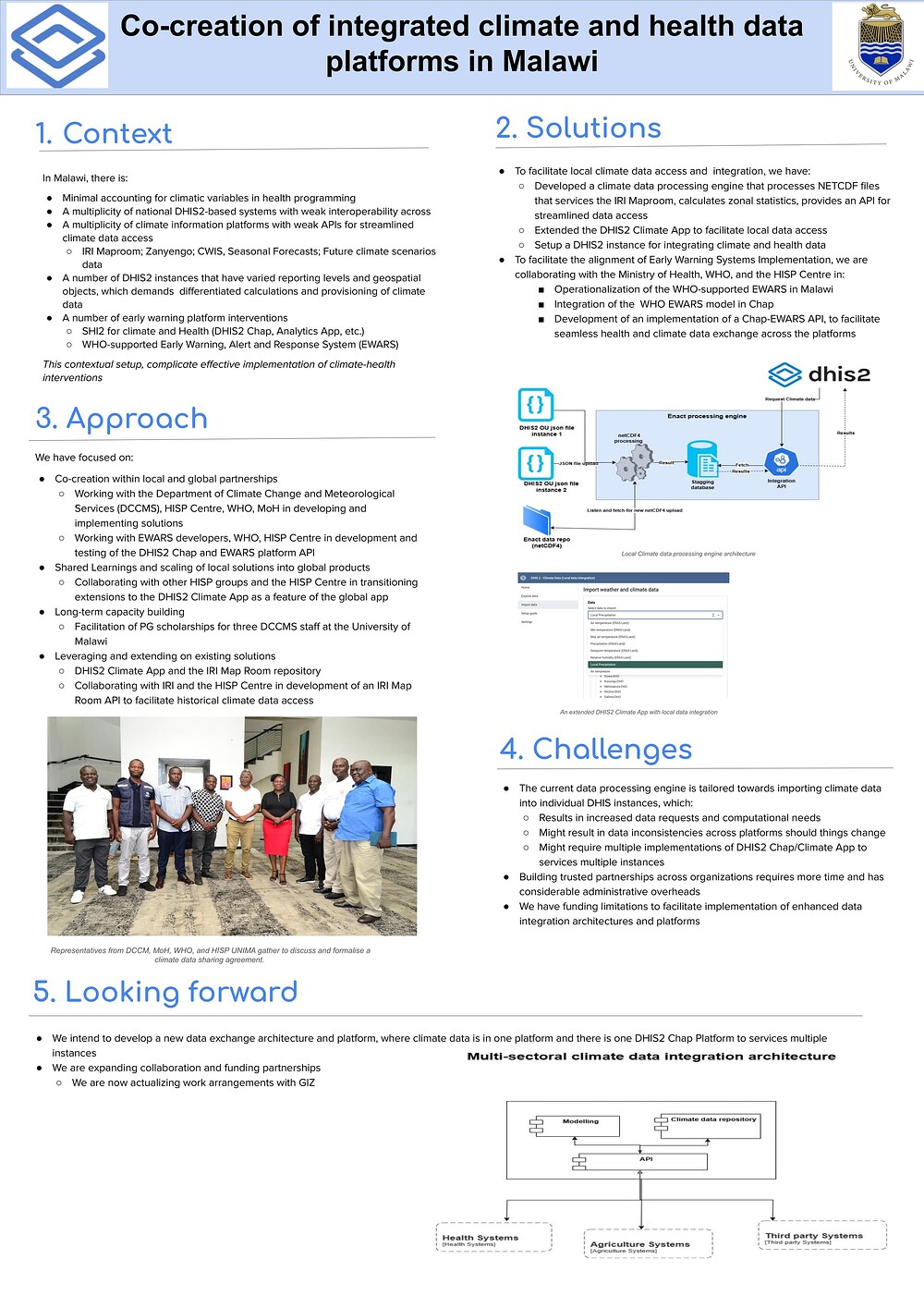AI Generated Summary
This document outlines a project in Malawi focused on co-creating integrated climate and health data platforms.
Context: Malawi faces challenges with minimal accounting for climatic variables in health programming, weak interoperability across various national DHIS2-based systems, and multiple climate information platforms with poor APIs. This complicates effective climate-health interventions.
Solutions Developed: To address these issues, the project has developed a climate data processing engine, extended the DHIS2 Climate App for local data access, and set up a DHIS2 instance for integrating climate and health data. They are also collaborating on operationalizing the WHO-supported Early Warning, Alert and Response System (EWARS) in Malawi and integrating it with DHIS2.
Approach: The project emphasizes co-creation through local and global partnerships (e.g., with the Department of Climate Change and Meteorological Services, Ministry of Health, WHO, and HISP Centre). It focuses on sharing learnings, scaling local solutions into global products, and long-term capacity building (including scholarships). The project also leverages existing solutions like the DHIS2 Climate App and the IRI Map Room, and is developing an IRI Map Room API for historical climate data access.
Challenges: Current challenges include a data processing engine tailored for individual DHIS2 instances, leading to increased data requests and potential inconsistencies. Building trusted partnerships is time-consuming with administrative overheads, and there are funding limitations for enhanced data integration architectures.
Looking Forward: The project plans to develop a new data exchange architecture where climate data resides in one platform, and a single DHIS2 Chap Platform serves multiple instances. They are expanding collaborations and funding partnerships, including with GIZ.
